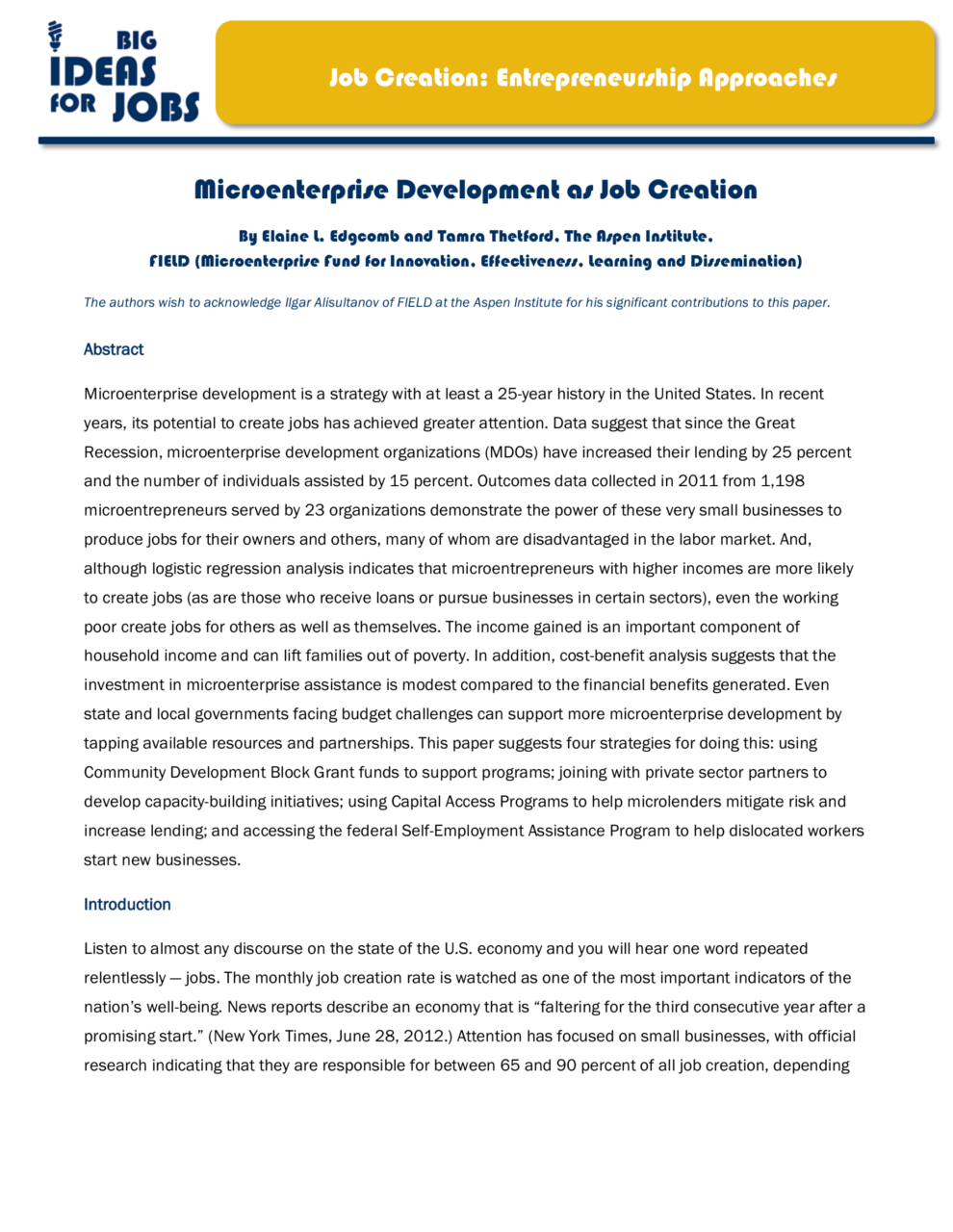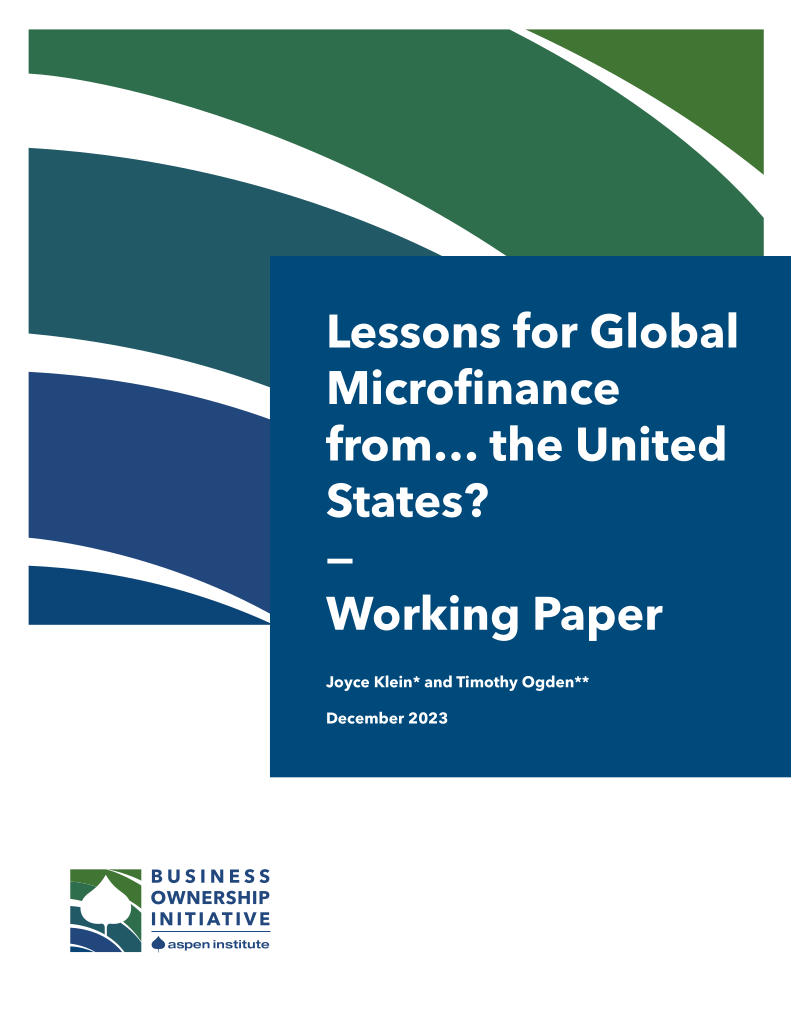Microenterprise development is a strategy with at least a 25-year history in the United States. In recent years, its potential to create jobs has achieved greater attention. Data suggest that since the Great Recession, microenterprise development organizations (MDOs) have increased their lending by 25 percent and the number of individuals assisted by 15 percent. Outcomes data collected in 2011 from 1,198 microentrepreneurs served by 23 organizations demonstrate the power of these very small businesses to produce jobs for their owners and others, many of whom are disadvantaged in the labor market. And, although logistic regression analysis indicates that microentrepreneurs with higher incomes are more likely to create jobs (as are those who receive loans or pursue businesses in certain sectors), even the working poor create jobs for others as well as themselves. The income gained is an important component of household income and can lift families out of poverty. In addition, cost-benefit analysis suggests that the investment in microenterprise assistance is modest compared to the financial benefits generated. Even state and local governments facing budget challenges can support more microenterprise development by tapping available resources and partnerships. This paper suggests four strategies for doing this: using Community Development Block Grant funds to support programs; joining with private sector partners to develop capacity-building initiatives; using Capital Access Programs to help microlenders mitigate risk and increase lending; and accessing the federal Self-Employment Assistance Program to help dislocated workers start new businesses.
Microenterprise Development as Job Creation
View this Publication
Download PDF
Next Post


